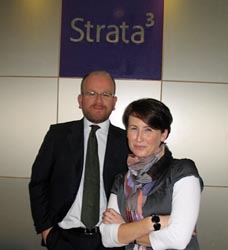Swing towards digital |
 |
| Tony Philpott on why there is growing support for the digital thrust in marketing |
Many years ago, the first space shuttle was launched. It had problems while in orbit as the heat-resistant tiles on its underside were falling off. It was big news and the world was watching. The day after the story broke, an ad appeared in one of the national broadsheets. It showed a line-drawing of the space shuttle and it was accompanied by the headline: ‘Wouldn't Have Happened If They'd Used Polyfilla'.
It was a tactically opportunistic piece of brand communications, wonderfully creative, utterly simple and for many people, undeniably memorable. But it also had another ingredient. Immediacy. It was as close as any ad could get to real-time consumer-communications. TV is not capable of it, nor is radio or press.
Of course, the ability of traditional advertising to react is limited by the production process, no matter what opportunity presents itself to marketers it's going to take time to develop and produce an ad as it's simply the nature of the business.
But in a recent over-the-phone client briefing an unexpected change in market conditions required an immediate tactical response. (There's that word again; immediate). Within five hours, an offer was presented to consumers.
Three hours later, there were close to 700 responses, which, over the coming days, peaked at a satisfyingly high number and arrived at a conversion-to-sale ratio well above expectations. That's eight hours from offer to response.
Eight hours to arrive at a consumer interface that didn't expire with the end of the offer. To marketers this is most encouraging, to consumers it's obviously appealing, but to traditional media houses and ad agencies it must be frightening. Why? Because it cost peanuts and the medium used was digital, not print, not press, not TV.
While the web was once a novel medium, existing only as a complimentary adjunct to mainstream communications, it is now a penetrative, precise, and ludicrously cost-effective message-delivery system. The shift it has caused in consumer behaviour is nowadays reflected in the shift in advertising budget priorities.
A few years ago, a hypothetical marketer with a €100,000 budget would have divvied it up between press, radio and TV, not any more. But this is nothing new, we all saw it coming, and indeed to their credit, agencies have always grafted on specialist arms as market/client needs dictated; what agency doesn't have a direct response arm, a specialist recruitment arm, or a public relations arm?
But a digital arm is not so easily grafted. The host body tends to supply it with the blood of traditional thinking when some would say that what is needed is a complete transfusion of new expertise. Many within the industry contend that it's the type of expertise that exists outside the frame and is incompatible with radio, TV, and print. For many digital exponents, that expertise is considered to be the detonator that gives power to digital marketing. Ciaran O'Reilly of Refresh Digital Communications believes that specialisation is what's now separating the wheat from the chaff.
O'Reilly acknowledges that brand-understanding and strategic planning need to be sharpened up in the digital arena, but he also believes that such understandings will genuinely create a new era in advertising led by agencies with digital in their DNA.
Orlaith Blaney of McCann Erickson agrees that traditional media have a little catching up to do, but she counters O'Reilly's assertions by saying that brands still need to be managed. The potential impact of ‘digital only' agencies is they can get distracted by vanity digital projects which are not brand-centric or on brief.
The caution is echoed by Gary Brown of RMG Target. “Digital is not about the web,” Brown said. “It's not just about e-messaging or twitters. Whatever way you do it, it's about real-time customer-contact and it's about immediacy. Visuals, motion graphics and all the other bells and whistles can carry your message but they have to be done by people who know what they're doing. If they don't, then the real-time immediacy of digital will make failure just as immediate,” Brown added.
Aisling McMahon of Strata3 says digital is a foregone conclusion in any marketer's plans these days. Online literacy is spreading quickly with increasing broadband penetration rates, web enabled mobile technologies and social media becoming a staple diet for most online users – from online dating to insurance policy shopping.
“Budgets have taught consumers lessons in how to find more choice or get better value online,” McMahon said. “Marketers need to think beyond traditional media in its application. Trying to morph traditional media into online through banner advertising or campaign websites does not cut it,” she added.
 |
ONLINE TARGETINGAisling McMahon and John Mitchell of Strata3 say that digital is not a one-way system of advertising and marketing. Marketers must clearly understand their audience and start a conversation that has the right language and tone to which they can relate. |









